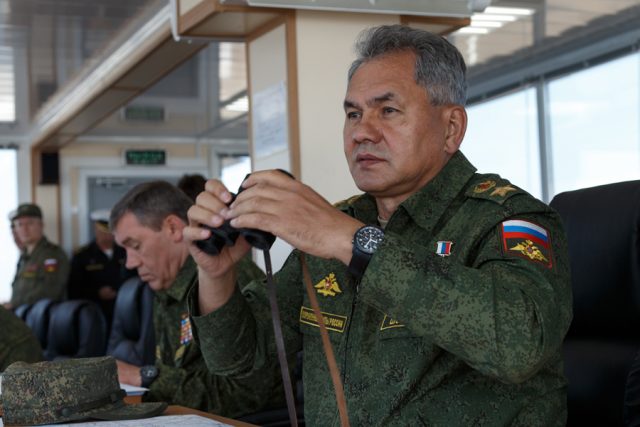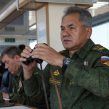
Russia’s Military Paper Tiger: Mobilization
Publication: Eurasia Daily Monitor Volume: 13 Issue: 147
By:

The Russian Armed Forces are routinely subject to “snap inspection” exercises and various measures to boost their ability to fight and deploy to assorted theaters of operations. And combat readiness checks were also central to the Kavkaz 2016 military exercise, the highlight of this training year. Commanders’ attention during the September 5–10 exercise focused on testing readiness, force interoperability and advances in command and control. Yet, the subtext to Kavkaz 2016, which is also consistent with themes explored in recent snap inspections, relates to the wider issue of “mobilization.” The mobilization issue permeates defense discourse and echoes the nostalgia of a once genuinely real capability. However, the forms of Russian mobilization currently witnessed in military terms, aiming to generate follow-on forces, remain paltry in their size and scope, while state-level mobilization, which the Kremlin spins as the country’s capacity to switch to a war footing, raises questions about the purpose in developing such capabilities for a conflict type that is highly unlikely (RIA Novosti, Vedomosti, Interfax, September 9).
Beyond the Southern Military District (MD), which served as the focal point for Kavkaz 2016, there is plenty of evidence that units’ advances in other MDs are also serving to further complicate the development of a nascent reserve system to support mobilization and breathe life into the concept of “territorial defense.” Krasnaya Zvezda profiled the formation of the 1st Tank Army in the Western MD, which has received welcome publicity in Russia as well as the scrutiny of the North Atlantic Treaty Organization (NATO) and its eastern flank members. The commentary stressed that new and advanced hardware and weapons systems are entering the 1st Tank Army, boosting the need for highly trained professionals. Among these assets are the upgraded T-72B-3, presumably a stop-gap ahead of procuring more T-90s and, in the future, the new T-14 Armata. However, the T-72B-3 is equipped with the latest multi-channel thermal imaging, ballistic computer, improved stabilizer arms, automatic target tracking and other innovations. There are unspecified numbers of T-80s and T-90s as well as new BMP-3 infantry fighting vehicles, along with advanced air defense and missile assets entering the 1st Tank Army. This is good news for the units involved. And while the total number of contract personnel rises throughout the Armed Forces, the demand created by introducing modern systems and hardware can feasibly be met. Yet, in turn, this impacts on the future training needs for reservists. Indeed, senior commanders in the 1st Tank Army confirmed that during recent exercises, units were issued with equipment to integrate all systems into the automated command-and-control system. This advance in network-enabled operational capability further underscores the need for highly trained personnel (Krasnaya Zvezda, September 8).
The concept of territorial defense—present in Russia’s Military Doctrine and now being more fully worked out in the context of ongoing change in the Armed Forces—represents a complex series of measures by the state to protect the population and critical infrastructure in war and in the “special period” before it commences. Nonetheless, as commanders grapple with how this fits into their planning and operational requirements, much of the training concentrates on low-level skill sets and ignores issues concerning the speed of such personnel being used in combat in any given conflict (Krasnaya Zvezda, September 6). Moreover, six years after a failed attempt to mobilize a whole brigade of reservists during an operational-strategic exercise, Russia currently has the actual option of raising around two battalions—hardly constituting a follow-on force.
One such example of a “breakthrough” in modern Russian mobilization capability appeared recently in the raising of a motorized rifle battalion of territorial defense reservists based on the training provided by the Novosibirsk Higher Military Command School (VVKU): its achievement was to call up around 400 personnel into the battalion. Reportedly, the training itself was fairly basic, resembling a refresher course for former demobilized conscripts. For example, the month-long training sessions involved classes lasting ten hours per day, and there were no drills conducted in military vehicles. Prior to this one-month training, there was also another refresher course, going through all stages of combat training, ranging from individual- to tactical-level drills throughout the various components of the battalion. Novosibirsk VVKU officers explain this is based on the likely use for these territorial defense units: acting to protect the most important military and government facilities, military and civil airports, rail and road bridges across water obstacles, or energy sources (Krasnaya Zvezda, September 6). Consequently, these reported advances in mobilization potential for territorial defense have little to do with actually deepening the limited capacity to generate follow-on combat forces.
This complexity is inherent in the mobilization system and extends into multiple state structures, including the Central Bank, and their ability to support switching to a war footing. All this implies preparation for large-scale warfare. But the system itself remains cumbersome and riddled with weaknesses, suggesting that none of this is considered to be a matter of urgency (Voyenno Promyshlennyy Kuryer, September 6). Indeed, the training system and range of incentives for reservists appears linked to freeing up other units that might be needed elsewhere in a time of national emergency, rather than simply protecting critical infrastructure. None of what the military is currently doing to train and raise units of reservists implies a greater capacity to handle the longer-term implications of replenishing combat units in a war zone.
According to one commentary in the Russian military press, noting Berlin’s recently announced encouragement of the German population to stock-up on food, water and supplies to prepare for any future national emergency, the system of civil defense in Russia also remains unclear (Voyenno Promyshlennyy Kuryer, September 6). If the population has no clear guidance on such issues, this is equally reflected in the military and its experiments with “territorial defense.” For all the apparent “planning,” Russian citizens, including members of the Armed Forces, can only “muddle through” such extreme circumstances.
The underlying reasons for this lowered capacity and confused policies stem from the collapse of the Soviet system of mobilization. They are also tied to ongoing discussion about Russia’s future role, its ties to East and West, and its views on the challenge presented by NATO on its Western border. Nonetheless, despite evidence that its military exercises rehearse inter-state conflict, the existing reservist system and its modest advances suggest that the threat of wider war is not seen as a truly pressing issue (Nezavisimoye Voyennoye Obozreniye, September 9; Kommersant, September 5).




